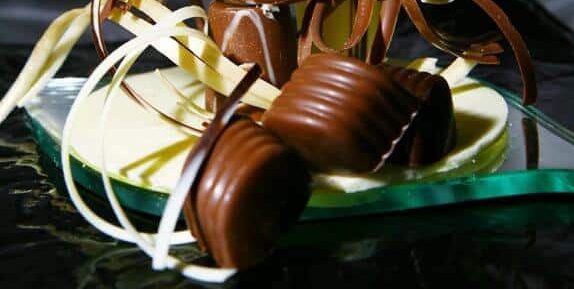Tempering Chocolate: Quick Guide on How to Temper Chocolate

Tempering is the process by which chocolate (couverture), when cooled and solid after melting, becomes glossy, shiny and has that certain crispness that cracks, even at room temperature.
This technique is mainly used when producing chocolate decorations, pralines and coatings.

Tempering Chocolate
Ingredients
Equipment Needed
- chocolate couverture
- wooden spatula
- probe or infrared thermometer
- granite surface to work on
Instructions
There are two main techniques for tempering chocolate
First :
- Melt chocolate over steam or in a water bath until it reaches 45C (115F).
- Remove 2/3 of it and pour on a marble or granite surface.
- With a spatula, spread the chocolate back and fourth until it has cooled down to 27C (80F). The consistency should now be thick and slow running.
- Combine this chocolate with the remaining 1/3 of the chocolate, reheated to about 32C (89F) for dark chocolate, about 30C (85F) for milk or white chocolate.
Second:
- Melt two-thirds of the chocolate to be tempered to a temperature of 45C (115F).
- Finely chop the remaining one-third of the chocolate and under constant stirring add to the melted mixture.
- Reheat until the mixture has reached 32C (89F) and is smooth and shiny.
Note:
- Tempering chocolate needs a bit of practice, but, the good news is, that if the tempering has failed and the solid chocolate does not achieve the desired result, you can always melt the chocolate again and repeat the process.
- To get the temperature right, it is a good idea to just simply measure it with a infrared or probe thermometer. The old method of testing the heat of the chocolate by feeling it with your underlip is just not very exact especially if one is not very experienced with tempering chocolate.
Notes

Tried this recipe?Let us know how it was!

